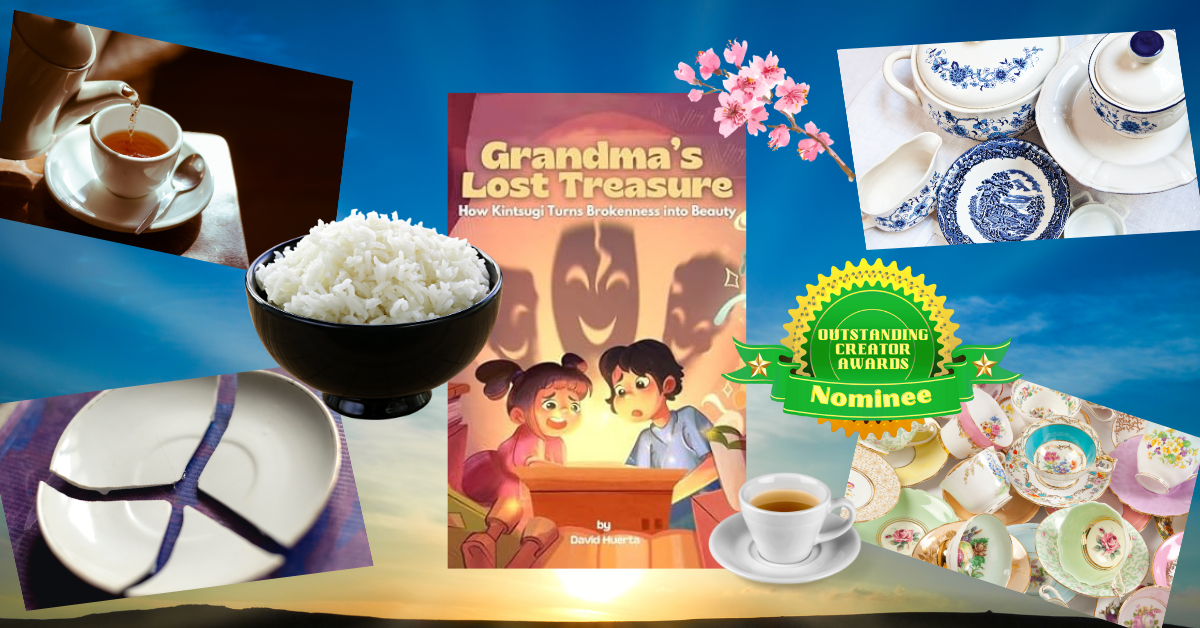|
Score: 94/100 (9.4 out of 10)
Grandma's Lost Treasure is a bright, beautiful, colorful, and uplifting children's book by David Huerta. Huerta is a huge lover of Japan and Japanese culture, and that plays into the content of this book. Grandma's Lost Treasure follows a group of Japanese dishes—teacups, a tea bowl, and a rice bowl. All of them are chipped or damaged in some way. The littlest teacup, in particular, is very self-conscious and perhaps even scared of its brokenness and imperfections. The other dishes are able to cheer him up and remind him that all of them are chipped or damaged in one way or another. In time, the old, broken dishes are being replaced by the newer dishes in terms of which are chosen and used more. The old, broken dishes are relegated to the back of the cabinet. Ultimately, they are placed in a cramped, dark box to be stored away for a long time. After several sad, dark, lonely years, the dishes are miraculously rediscovered by the two children in the household: a brother (Kin) and a sister (Sugi). The dishes are miraculous given the ability to speak to the siblings, similar to how they'd been able to talk to each other earlier (in a Toy Story sorta way). Together, the dishes, Kin, and Sugi are able to come up with a way to restore them to their full, glorious selves—and more! Kin and Sugi are able to use tree sap as a sort of glue with some decorative glitter to make the dishes really stand out! They become even more beautiful than before, and their owner brings them back to the front of the cabinet. They become a mainstay of the kitchen yet again! Grandma's Lost Treasure seems to be a book about continuous improvement--kaizen. Kaizen isn't only achieves through hard work (although that's part of it), it's also achieved through dedicated problem-solving and innovation. The children in this book are able to figure out a way to not only fix the dishes, but to make them even better than before! They're able to put the pieces back together, fill the cracks (to prevent leaking), and even decorate them. Another aspect of Japanese culture that this book captures is how dining and eating with your family is associated with memories. The grandmother (“Obachan”) is flooded with positive memories when she's reunited with her old dining ware. While the message of the book is beautiful, the illustrations are even more beautiful! In fact, the illustrations are the highlights of this book. They have a very Hayao Miyazaki/Studio Ghibli-ish look and feel. Check it out on Amazon!
0 Comments
Leave a Reply. |
Archives
July 2024
Categories |

 RSS Feed
RSS Feed